Last Updated on May 10, 2025 by Pauline G. Carter
Do you know what you should do to help your stressed dog? This is a question that haunts every dog parent. After all, we do want the best for our pets.
While dogs suffer from anxiety just like humans, their stressors vary. Anything from moving home to too much noise, strange people, or animals in the house can be stressful to your pet.
To help your dog, you must understand the warning signs that indicate how they feel.

How To Tell If Your Dog Is Stressed?
How do you know your dog is stressed? As dog parents, we are familiar with basic clues to our pet’s needs. This could be tail wagging when they need a cuddle, pacing at the front door when they need a walk, or pawing bowls when they need food.
Observing our pet’s body language can help us determine what they’re feeling, including whether or not they are stressed.
Some stress indicators include:
Growling
If you notice your dog growling more than usual, it’s time to introspect. Are you invading its personal space? Does it feel threatened by something or someone?
Don’t confuse growling with your pet taking an aggressive stance. It is not. They’re simply telling you that they’re uncomfortable.
For instance, yelling at your pet if it starts growling when someone in the family approaches them while they’re eating will only add to their anxiety and fear.
Don’t ‘police’ your pet when it growls. Instead, read the warning signs they project, respect their personal space, and leave them alone.
Pacing or Shaking
Pacing is quite common with dogs, which is why most pet parents don’t recognize it as a stress indicator. To understand what pacing or trembling means for your pet, observe what happens right around the time your dog starts demonstrating this behavior.
For instance, does your pet pace while you load up the car? Could it mean that your dog is agitated as it recognizes its time to visit the vet?
If you have a senior dog, unusual pacing could be a sign of dementia. If so, get a professional to oversee your pet’s behavioral changes and rule out potential reasons and outcomes.

Changes in Body Language or Posture
Is your dog tucking his tail and walking rigidly? Does it avoid maintaining eye contact? Dogs try to avoid stressful situations and communicate they’re not a threat by displaying body language associated with submissiveness.
If your intonation or behavior has changed with your pup, your dog may think it’s done something wrong, prompting it to take a more obedient or meek stance.
Whining or Barking
Most of the time, we indulge in play-fighting with our dogs. Although a great source of entertainment and bonding, it may sometimes lead to a change in their vocalization.
Whining or barking during rough playtime could be indicative of an automated stress response. They might be telling you that they don’t feel safe in a certain environment or are trying to self-soothe.
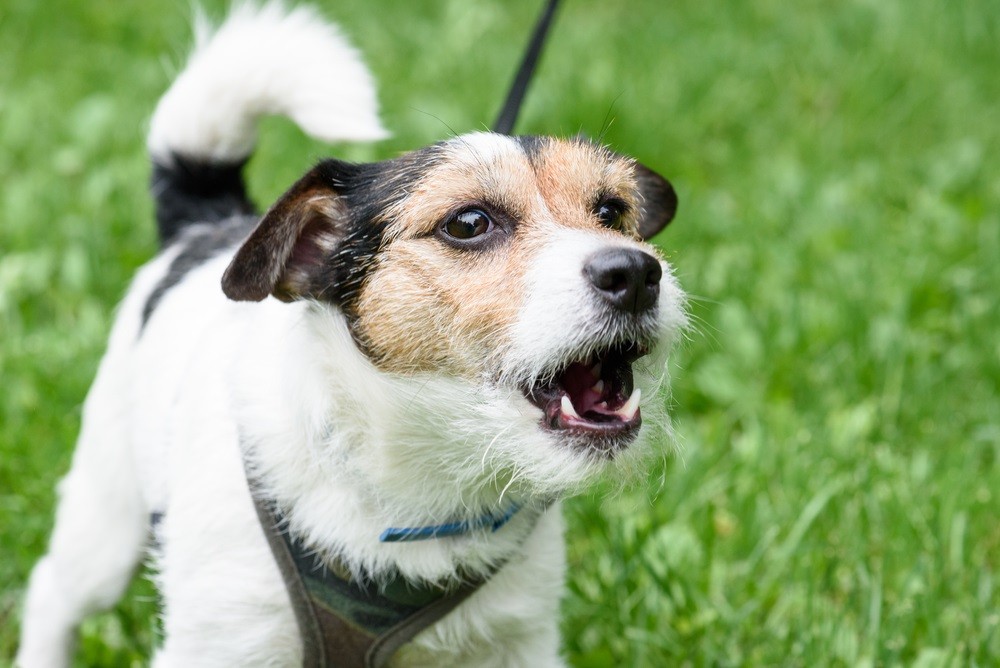
Displaying Flight Tendencies
If your dog is avoiding something or someone, it will try to focus on anything but that. It may even try to hide behind you or nudge you in a bid to prompt you to remove them from the confining, triggering, or stressful situation.
Signs of stress and anxiety vary from pet to pet. Some may even border on normal dog behavior, making it incredibly hard to diagnose. As challenging as it may be, as a pet parent, it is essential to pick up on such clues to avoid the situation from worsening.
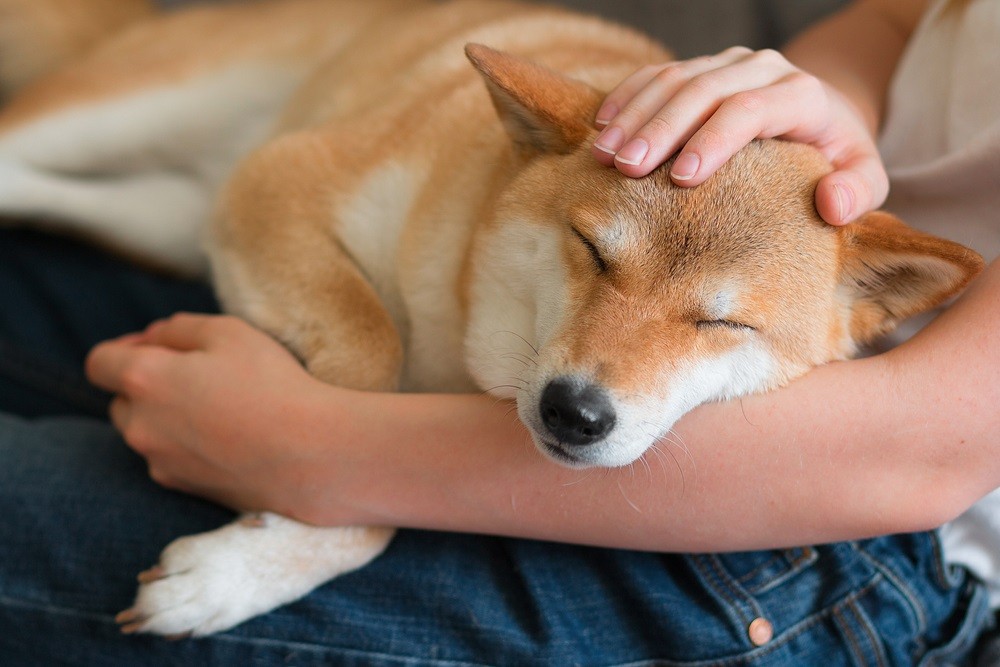
How To Calm A Stressed Dog?
Before you learn how to calm your dog, ask yourself: Are you unknowingly contributing to their stress and anxiety? If so, evaluate what you’re doing and correct your behavior.
Remember, Your Pet Can Feel And Even Mimic Your Stress And Attitude.
If not, here’s what you should do to help your stressed dog:
Regular Exercise
Exercising can prove to be a great bonding time. The stronger your bond, the more your pup will trust you. Exercising regularly also helps dogs with separation issues.
So if you’re a dog parent to an anxious pup, taking them for a walk every day or putting them on an exercise regimen is probably the most fool-proof way to calm your dog without any drawbacks.

Music Therapy
Music has the power to transform. Classical music, like Bach, has proven to be quite effective in tackling stressful situations by promoting a feeling of calmness and relaxation.
If you constantly find yourself out of the house and have a dog with anxiety and separation issues, you can use relaxing tones and calming background music to settle your dog.
Mental Stimulation
If your dog is stressed and physical therapy isn’t helping, try mental stimulation. Teach them tricks. You can also hire a professional trainer who can provide your pet with scent training or engage them in agility training.
You could also enroll your dog in playgroups. Establish a reward or treat system—hide treats all over the house and have your dog find them.
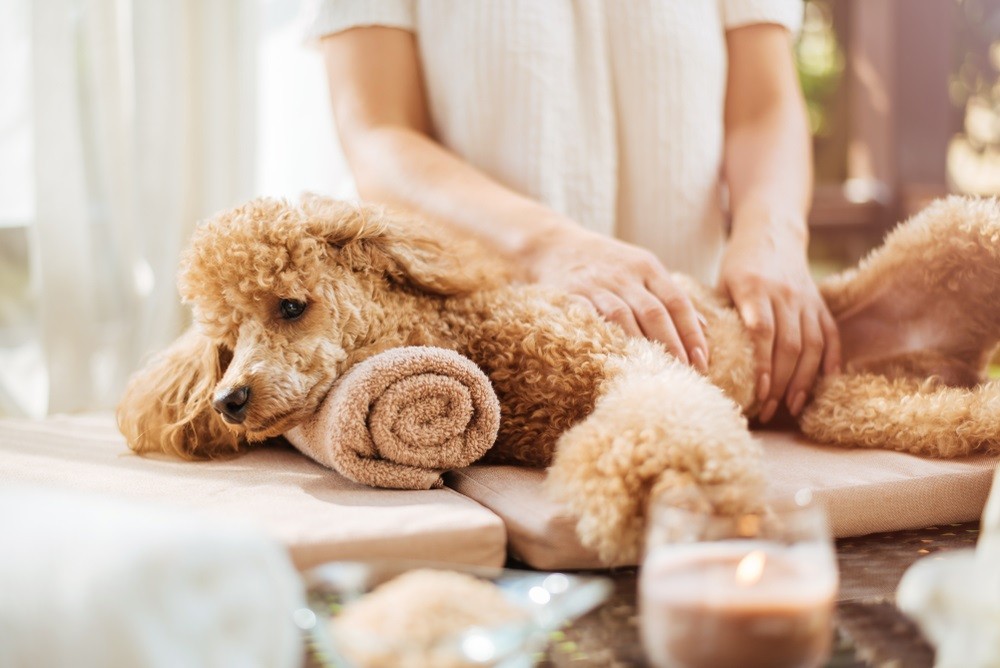
Massage
Anxiety and stress sometimes take a toll on your dog’s body. Massage therapy can prove to be a great way to alleviate stress by relaxing them. In addition, calming postures paired with stretching techniques as taught during “dogya” can help relieve stress.
Additionally, human touch has proven to be quite miraculous in curbing stress. If you haven’t been giving your dog enough attention and cuddles, it’s time to change that.
Use Compression Wraps
When you notice your dog displaying signs of stress and anxiety, wrap them in a blanket or, better yet, invest in compression wraps. Sometimes lack of company and attention can trigger signs of stress, so holding them or wrapping them in a blanket can promote calmness and contentment. Knowing they’re loved and have an ally in you can help reduce their stress.
Remove Stressors
Identifying your dog’s behaviors can sometimes be all the ammunition you need to tackle your dog’s anxiety and stress disorders. However, it is a “band aid” approach. By identifying what triggers their stress, you can remove it from the environment altogether.
In most cases, you will be able to desensitize your dog by helping them face their triggers in a controlled manner under your supervision. Remember, don’t force it on them; introduce it in a novel way with loads of positive reinforcement.
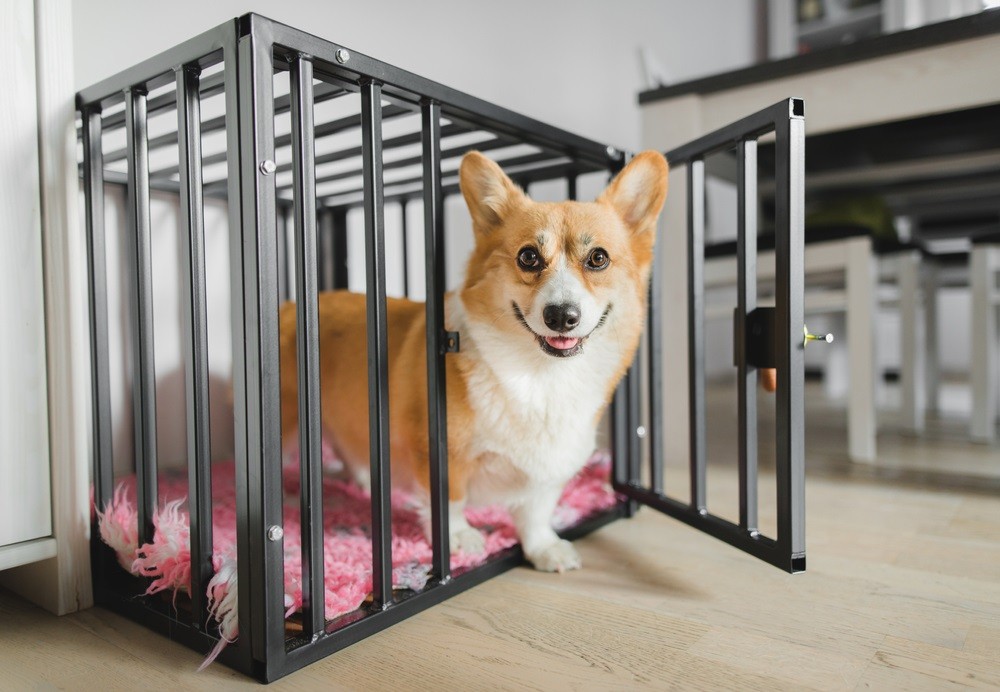
Crate-Training and Time-Out
Time-out and isolation can sometimes prove to be the best way to deal with your pet when they start acting out of character.
This is where crate training comes in. When you crate train your dog, you give them a safe place, one they can revisit every time the outside environment gets too threatening and overwhelming.
If You Haven’t Crate-Trained Your Pet As Yet, Introduce Your Dog To The Crate With Plenty Of Treats, Rewards, And Positive Reinforcement.
You can look for crates specifically designed for dogs with anxiety. In addition to providing them a haven, they also come packed with helpful features like noise cancellation, reduced light, and vibration isolation, among other things.
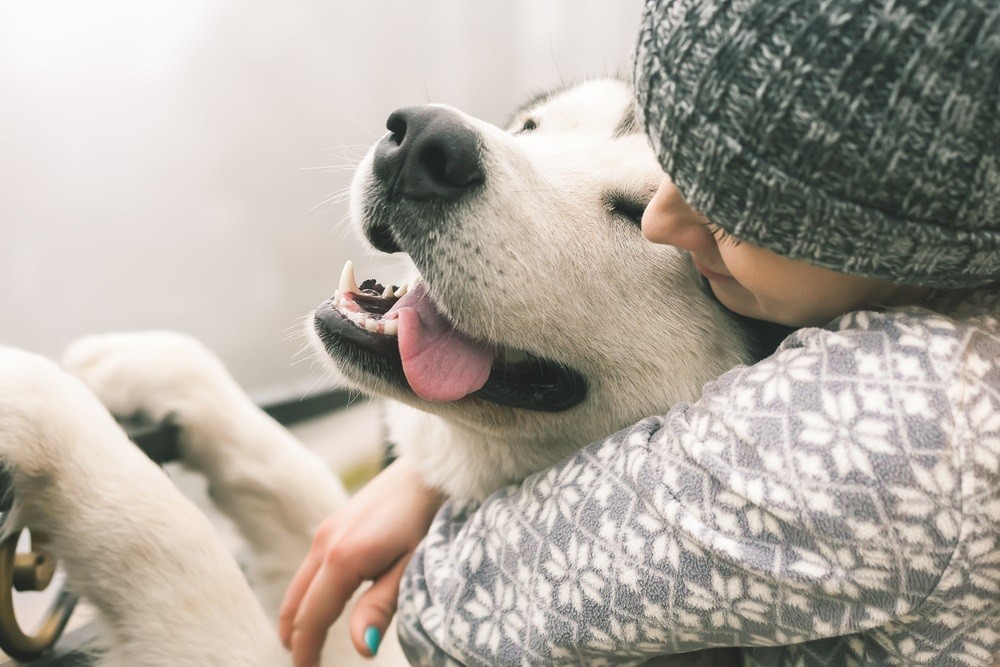
Something To Remember
Stress is not all bad. Sometimes, stress can prove to be a protector, giving our pets the ammunition they need to protect themselves from threatening situations and people.
Depending on the level of stress they experience, some dogs may take a little longer to get back to their normal self. Comparing their progress with another dog of the same breed or anxiety issue will not change their ability to tackle issues. Give them time, love, and patience. They deserve it.
Don’t punish your dog or engage in negative reinforcement techniques to tackle their anxiety and behavioral issues. Your dog looks up to you as their protector.
Punishing them for something they have no control over can do more harm than good. It can break the bond, weaken the trust and make your dog fear you. Instead, recognize their problems and work towards solving them together.
However, if your dog’s anxiety and stress response worsen with time, it’s time to consult a veterinarian. They may help find the root cause and provide appropriate solutions for the same.
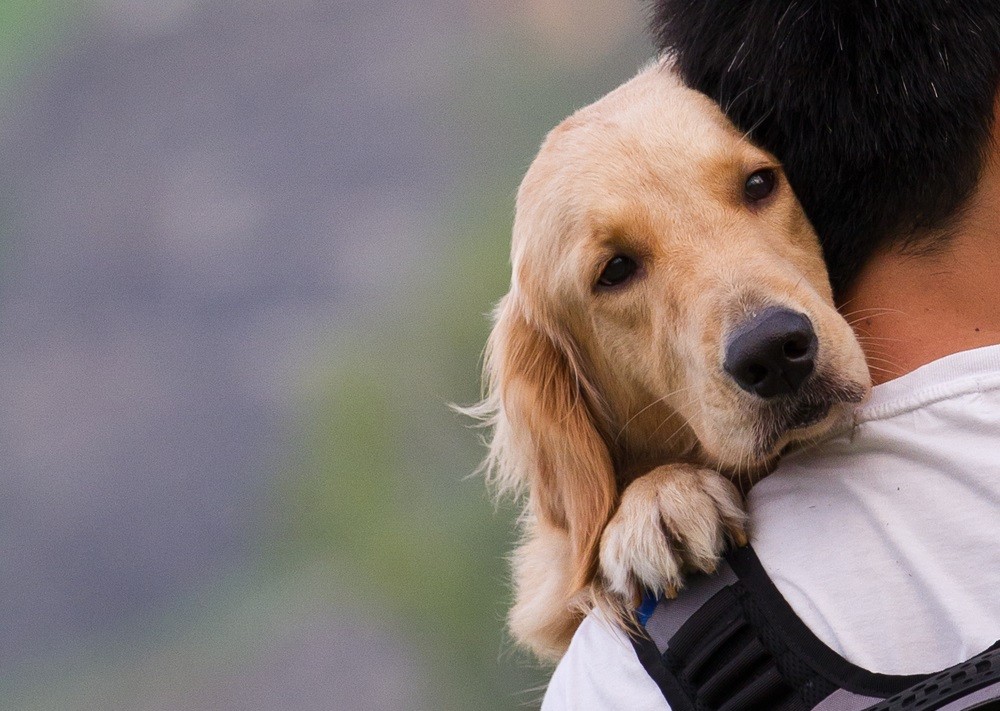
Wrapping Up
It’s important to stay calm when you notice your dog getting stressed and anxious. Give them space and attention, but don’t coddle them.
They May Start Acting Out More Frequently When They Notice They’re Getting Rewarded For It In The Form Of Treats And Cuddles.
The above-listed suggestions can help if you’re confused or unsure of what you should do to help your stressed dog. They have the potential to create a huge difference in both yours and your canine’s life. Remember, it’s always better to look for natural solutions than resort to drugs and sedatives.

